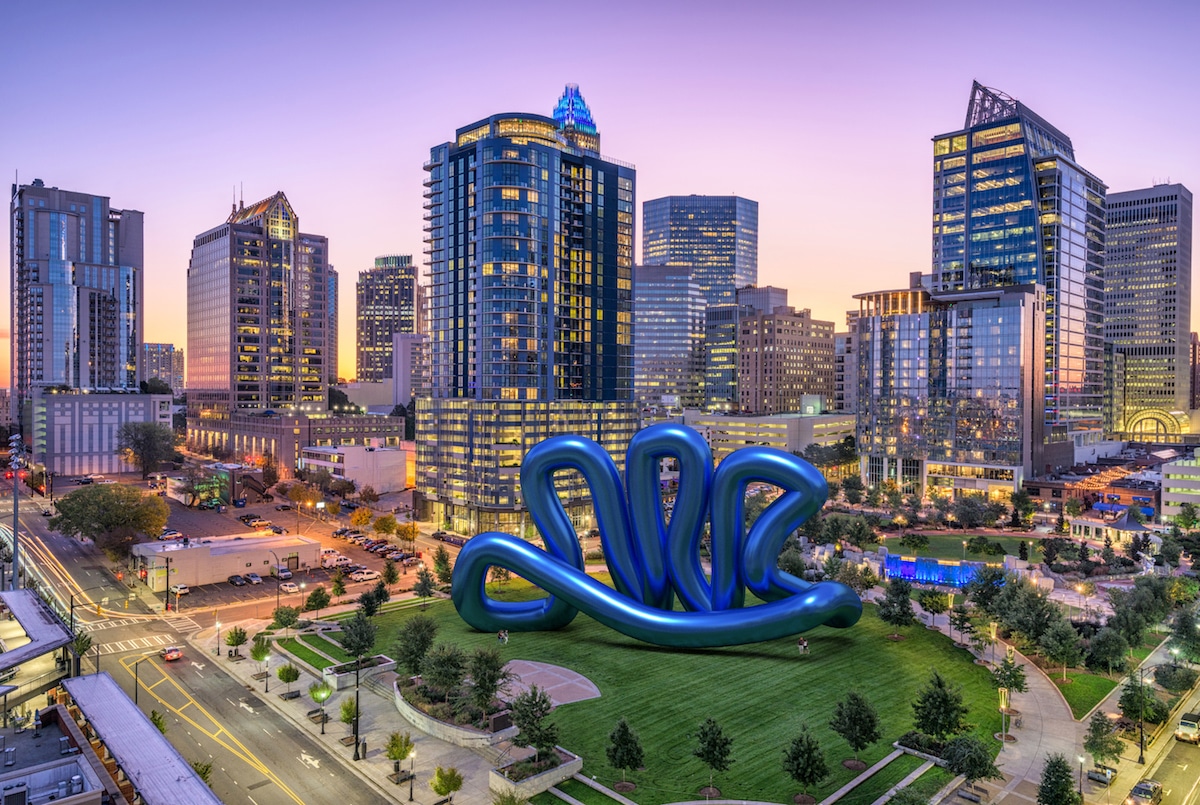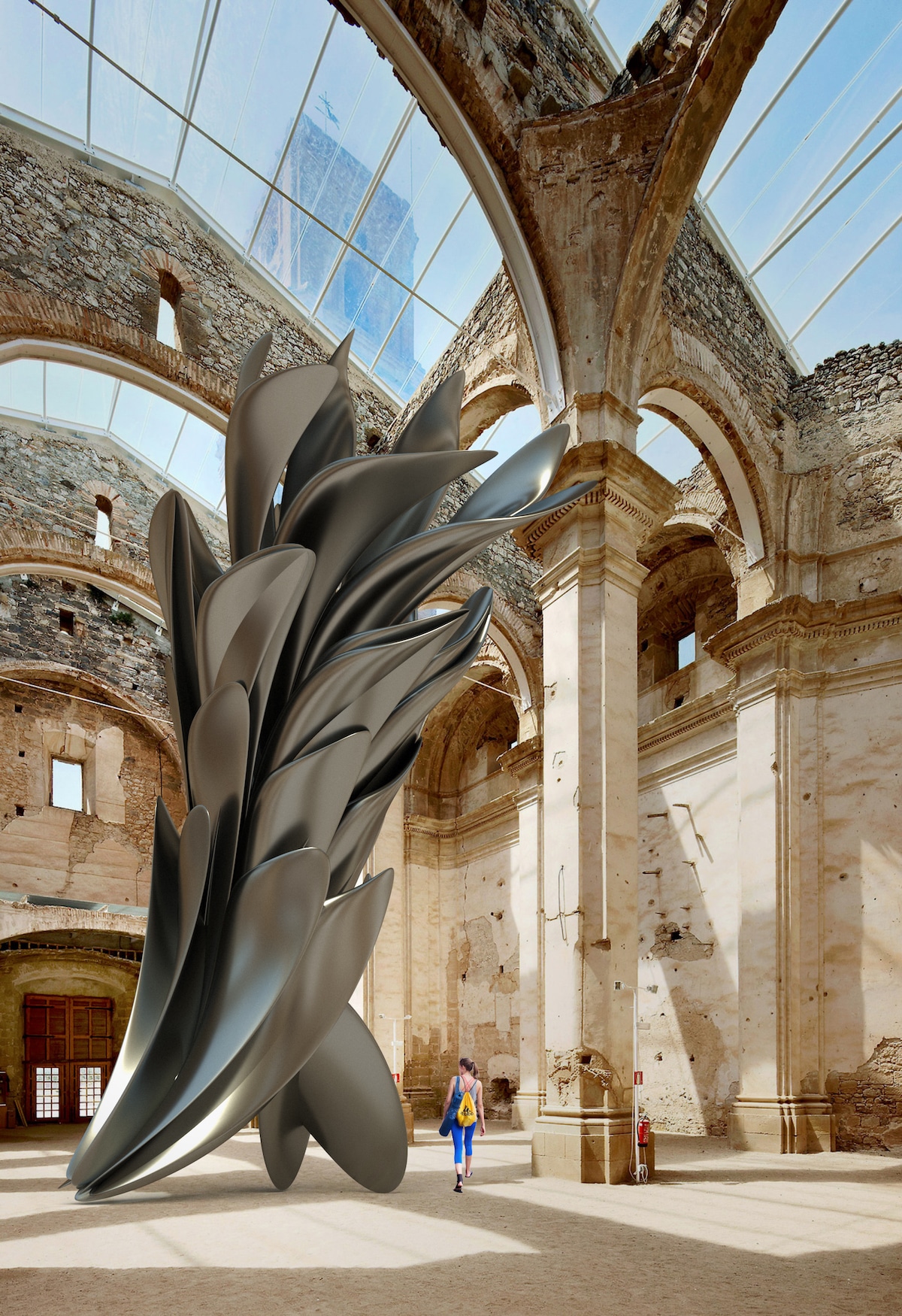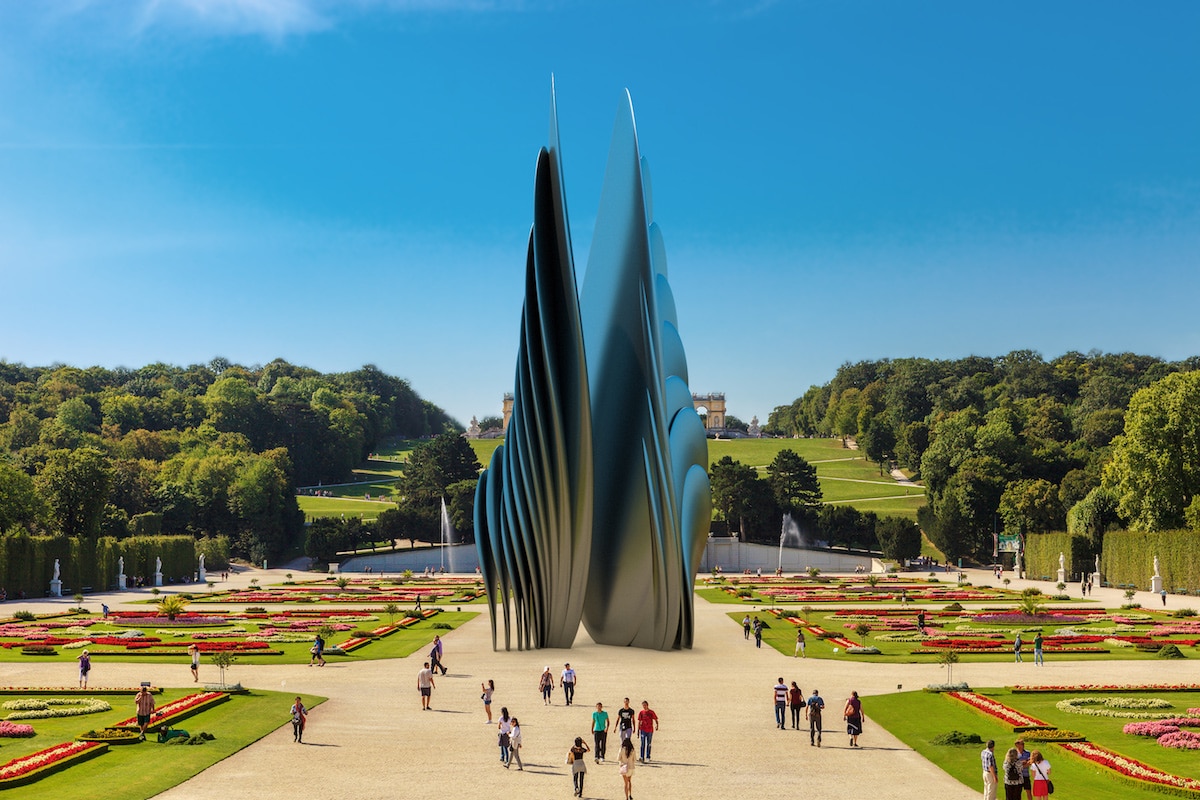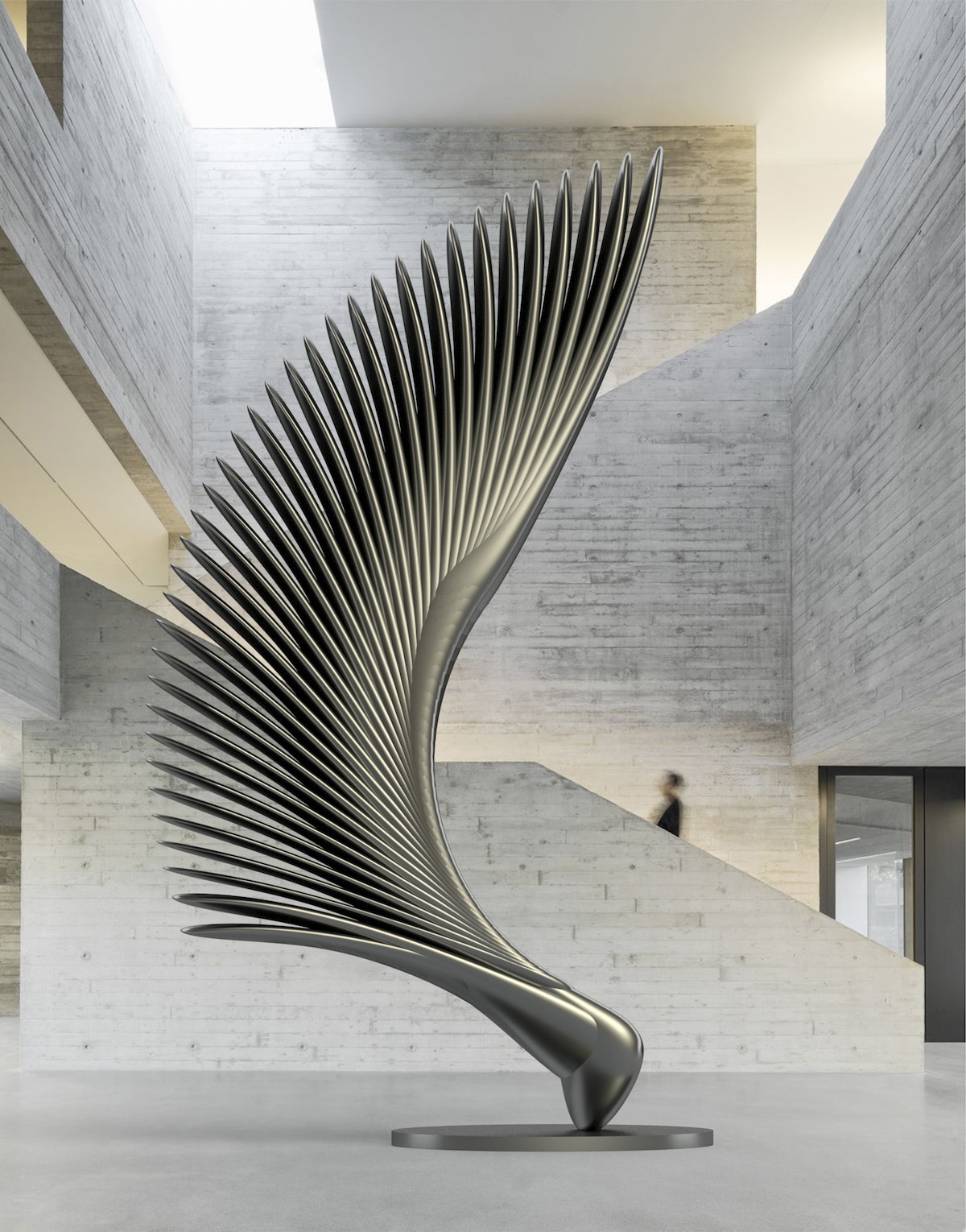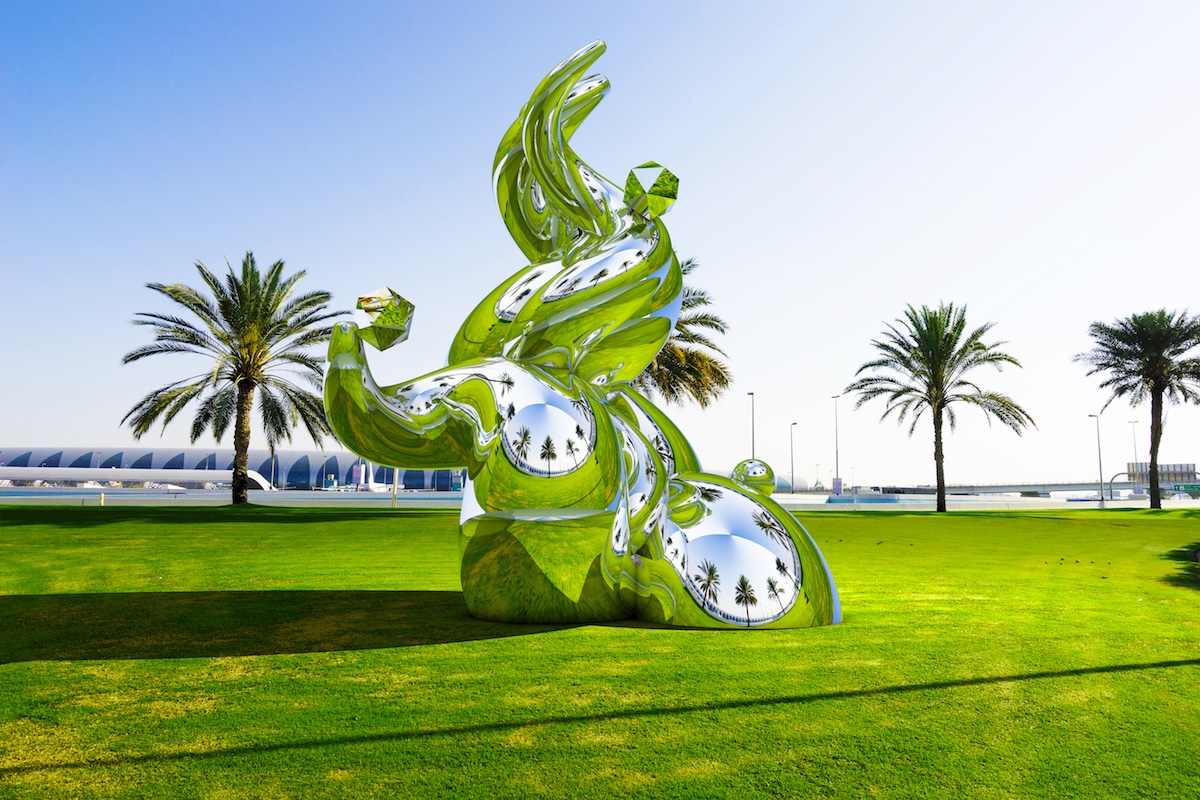
Artist Ken Kelleher combines his training as a sculptor with his prowess in UX design to create hyperrealistic projections of public sculpture. Kelleher allows his imagination to run free, placing contemporary sculptures everywhere from Venice’s busy St. Mark’s Square to minimalist interiors. Working with different series, Kelleher churns out three-dimensional renderings that give potential clients a look at the artwork that could decorate any given environment.
Kelleher’s love affair with large-scale sculpture started when he was in art school, where he developed pieces up to 30 feet tall, causing the school to put a limit on the dimensions students could produce. In the virtual world, he’s able to experiment quickly and see how his artistic vision blends into any environment. The results are so effective that it’s often difficult to believe we’re not looking at fully realized, physical sculptures.
For Kelleher, working this way allows his artistic production to keep up with his creative ideas. Rather than spending five to ten years on the production of a single piece, technology allows him to accelerate the entire process.
“If you think about it, making art in this way is disruptive. It disrupts art in a similar way that, say, Airbnb disrupted hospitality, or Uber disrupted transportation,” Kelleher shares with My Modern Met. “Technology exists today which didn’t before, and like all new tools, when artists use new tools and technologies, new paths are created and innovation thrives. We’re in a culture today of innovation, and all around you can see how artists reflect that and extend on it. In addition to using my models to make fabricated pieces, they can also be extended into new mediums and new venues. I can project them as holograms during an art event, they can be used in AR, they can be printed, cast in bronze, or printed on archival paper.”
By opening the doors and embracing this new technology, Kelleher simply expands his possibilities as an artist. His public sculptures, in their virtual form, allow Kelleher to push the limits of what’s possible and open the imagination of the public. When not in front of the computer, the artist still produces sculptures in his studio. In this way, the virtual work simply enhances his physical production, rather than detracting from it.
Now that these renderings have provoked such a positive public response, Kelleher has been invited to submit proposals for public sculptures in Italy and Portugal. He’s also turned in proposals for a piece at Oman’s airport and has been invited by Nike to produce an Augmented Reality installation for an upcoming event. Slowly but surely, Kelleher is merging his virtual and physical worlds.
Sculptor Ken Kelleher creates incredibly realistic, thought-provoking renderings of public sculptures.
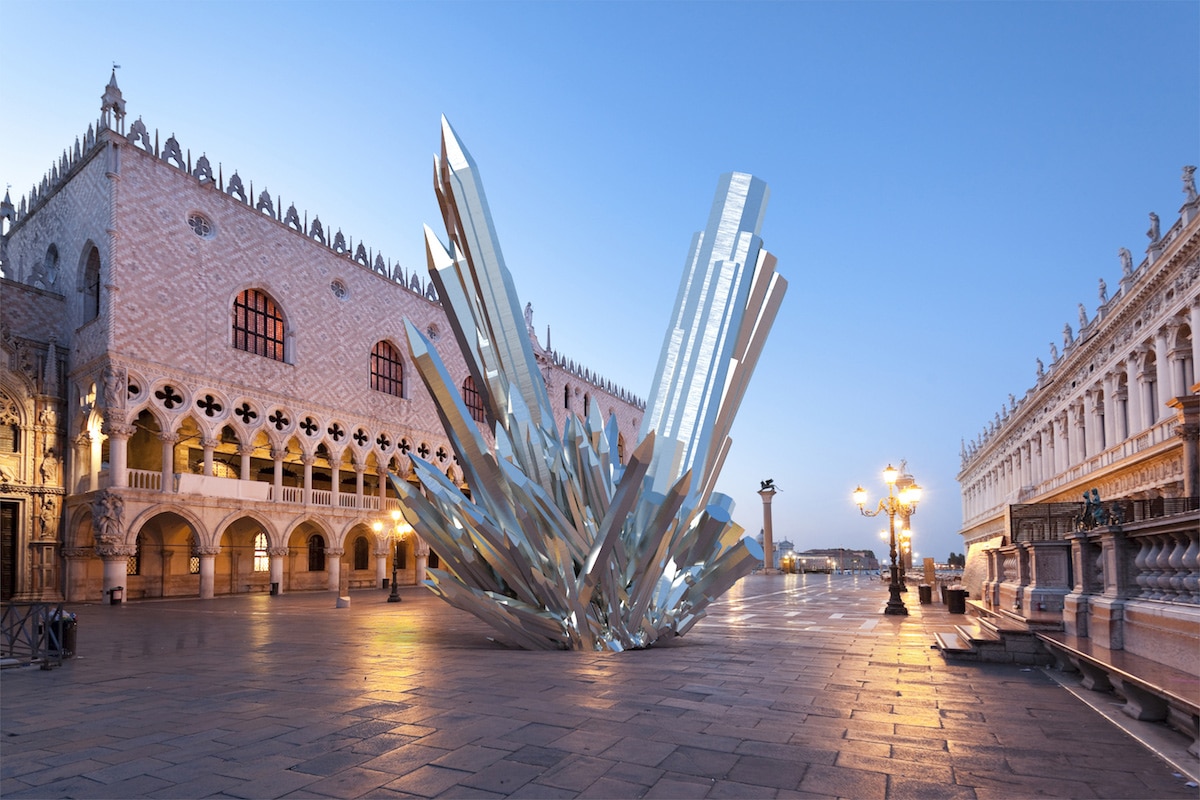
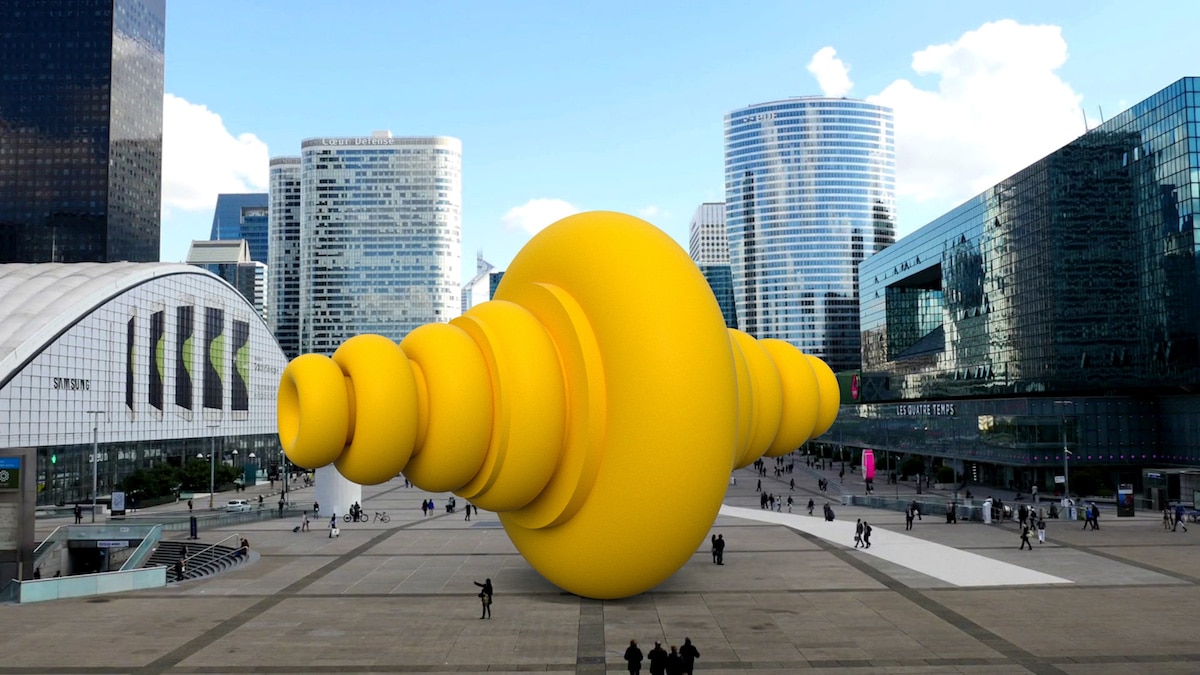
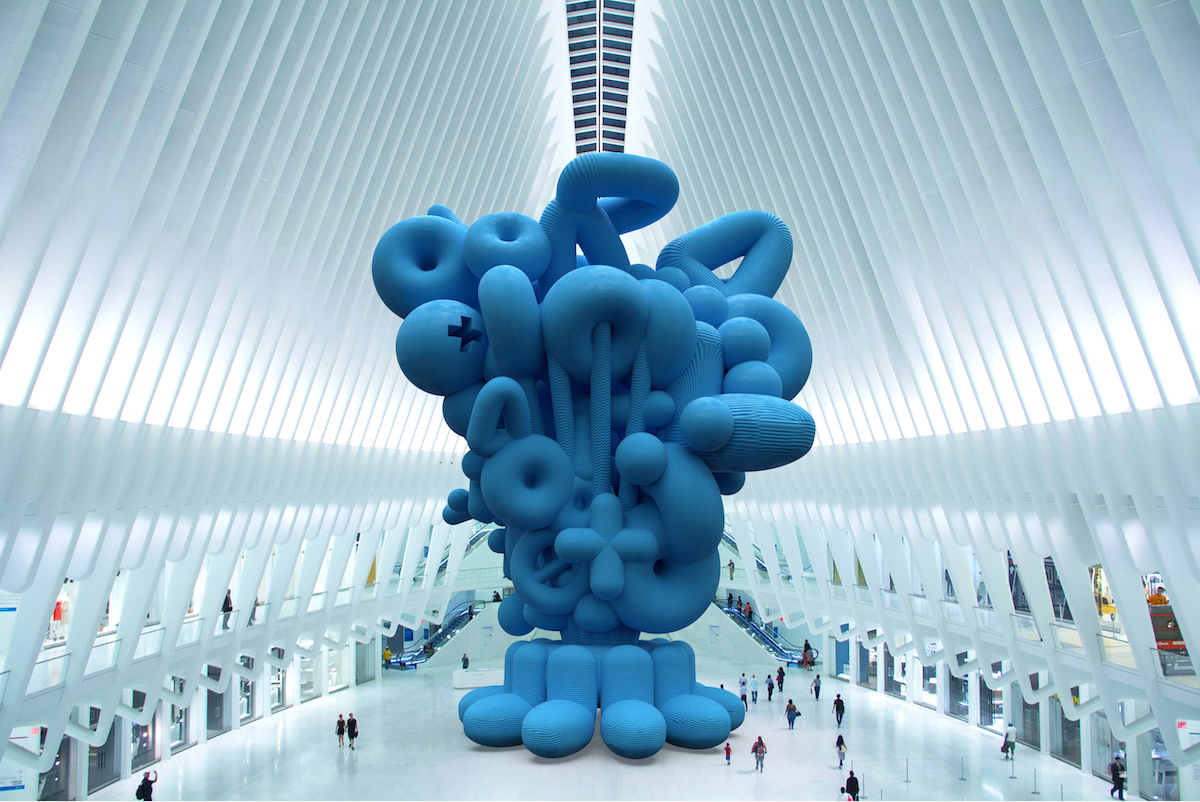
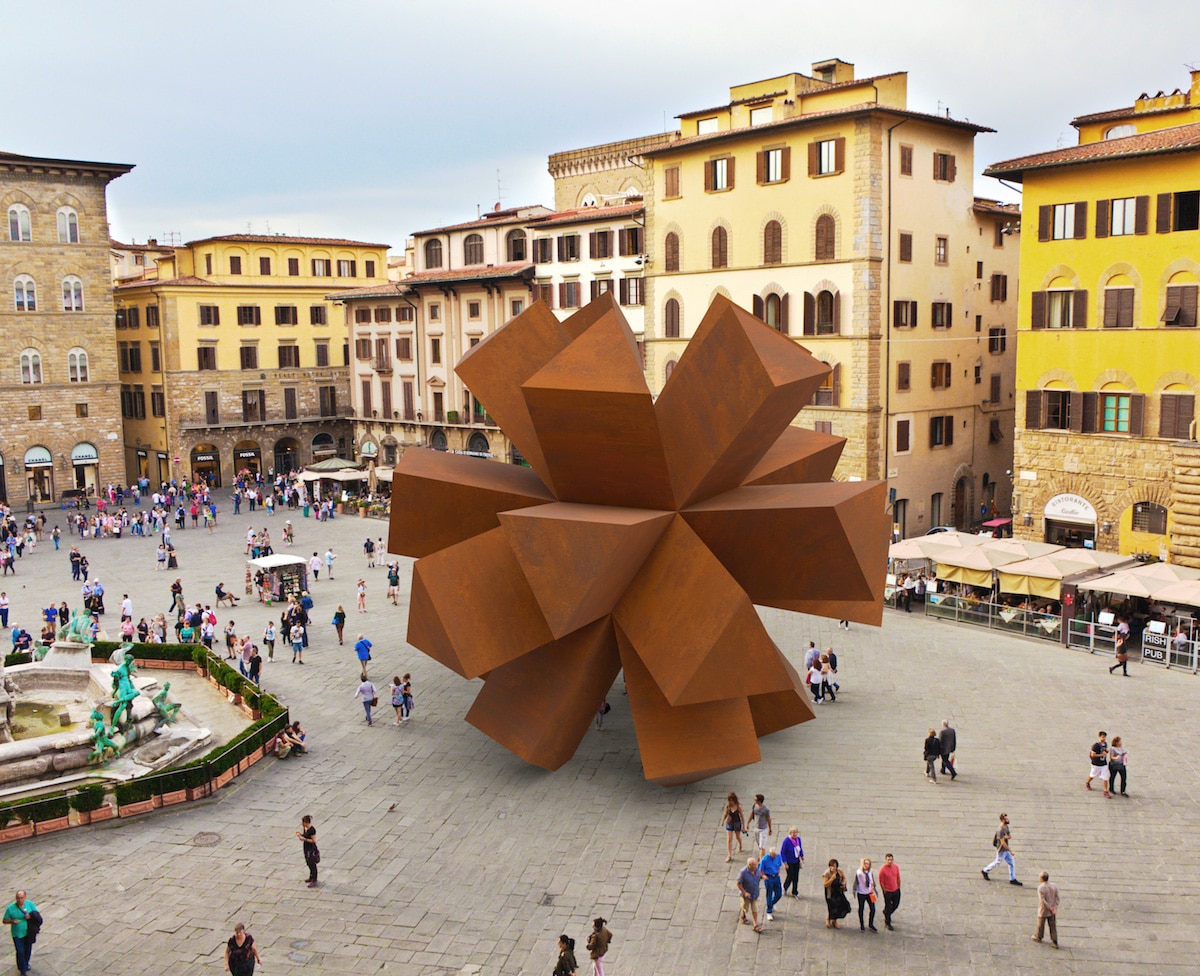
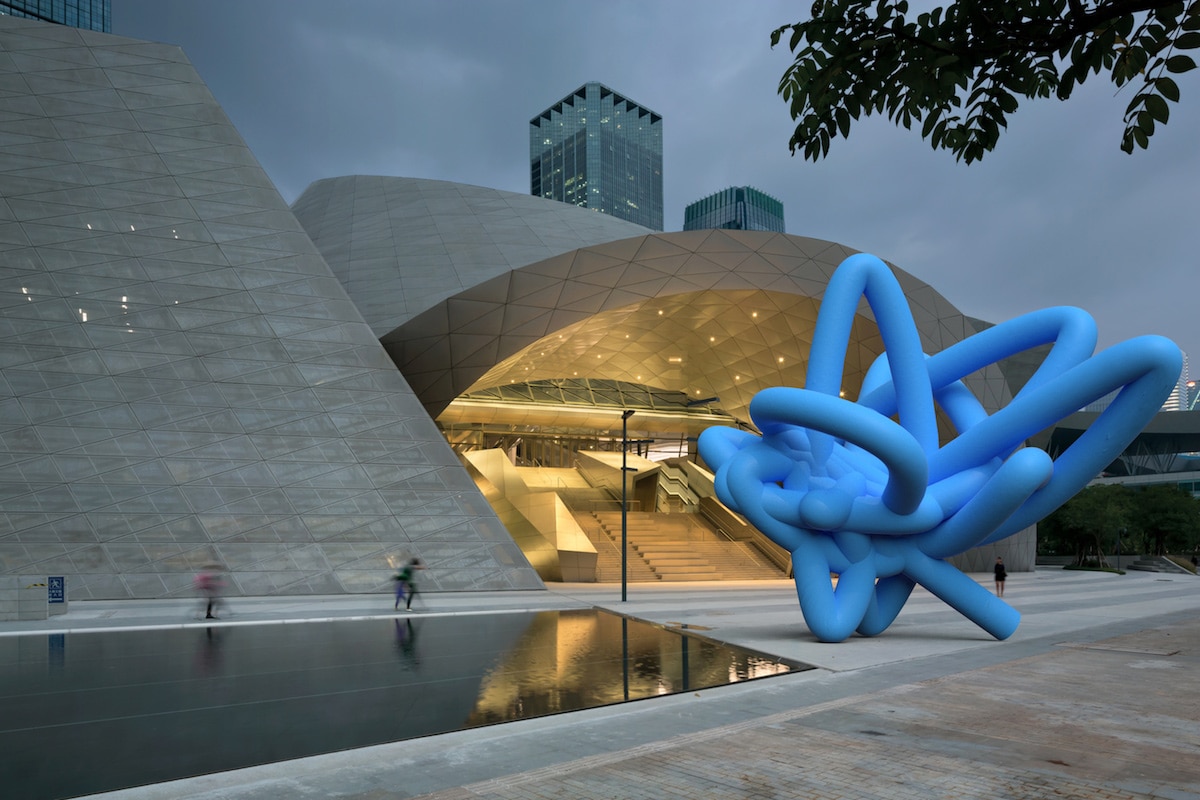
“I really want people to be inspired. Inspired to make things themselves. Inspired to explore. Inspired to follow their dream and passion.”
